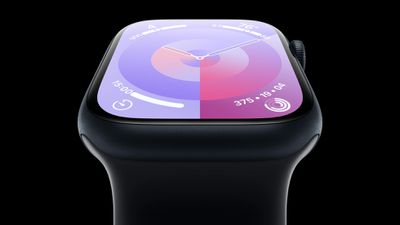Apple plans to use new low-energy OLED panel technology in the next Apple Watch to further reduce the power consumption of its always-on display, claims a new report out of Korea.
According to The Elec, Apple will adopt new low-temperature polycrystalline oxide (LTPO) thin-film transistor (TFT) technology for its upcoming Apple Watch, which is scheduled to be released in the second half of this year.
LPTO TFT is a method of applying oxide on the driving TFT and the switching transistors behind each pixel. Switching transistors control the voltage applied to the liquid crystal cells, allowing precise control of the amount of light that passes through each pixel.
Existing Apple Watch OLED displays use LPTO TFT in only a few switching transistors, and rely on low-temperature polycrystalline silicon (LTPS) technology for the majority of transistors as well as the driving TFT.
Using oxide instead of LTPS for the driving TFT and more of the switching transistors means that oxide alone is responsible for the current running through the majority of transistors that connect directly to the OLED pixel. In the new LTPO OLED application, increased use of oxide means lower leakage current and more stable operation at low refresh rates, resulting in overall power savings.
The downside is that the technique means more complication in the manufacturing of the TFT substrates. According to the report, LG Display is expected to take the lead in the development of the new LPTO OLED technology. Meanwhile, Samsung is participating in a development project that should see it join Apple’s LPTO OLED supply chain in time for next year’s Apple Watch.
This has led to industry speculation that Apple is planning to expand the use of LPTO OLED technology to other products such as the iPhone. The current iPhone 15 and iPhone 15 Plus use LTPS panels, while Apple’s iPhone 15 Pro models use the more advanced LTPO panels, which support variable refresh rates.
Apple is expected to retain the use of the less advanced LTPS panels in this year’s iPhone 16 and iPhone 16 Plus to maintain differentiation between its standard and Pro models. However, next year’s iPhone 17 and iPhone 17 Plus are expected to adopt the same technology, which would mean Apple’s 2025 iPhone series will be the first of its kind to feature ProMotion and always-on displays across the lineup.






